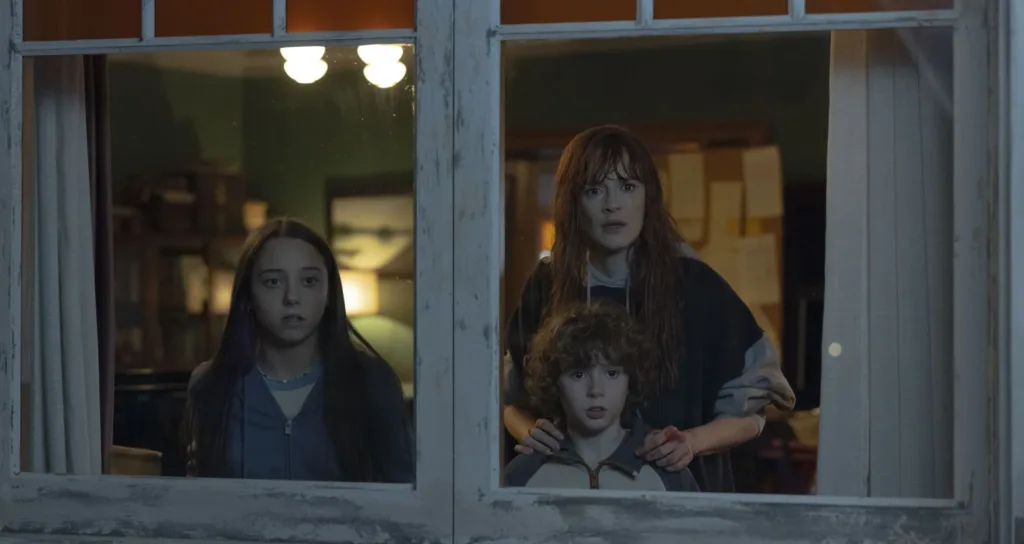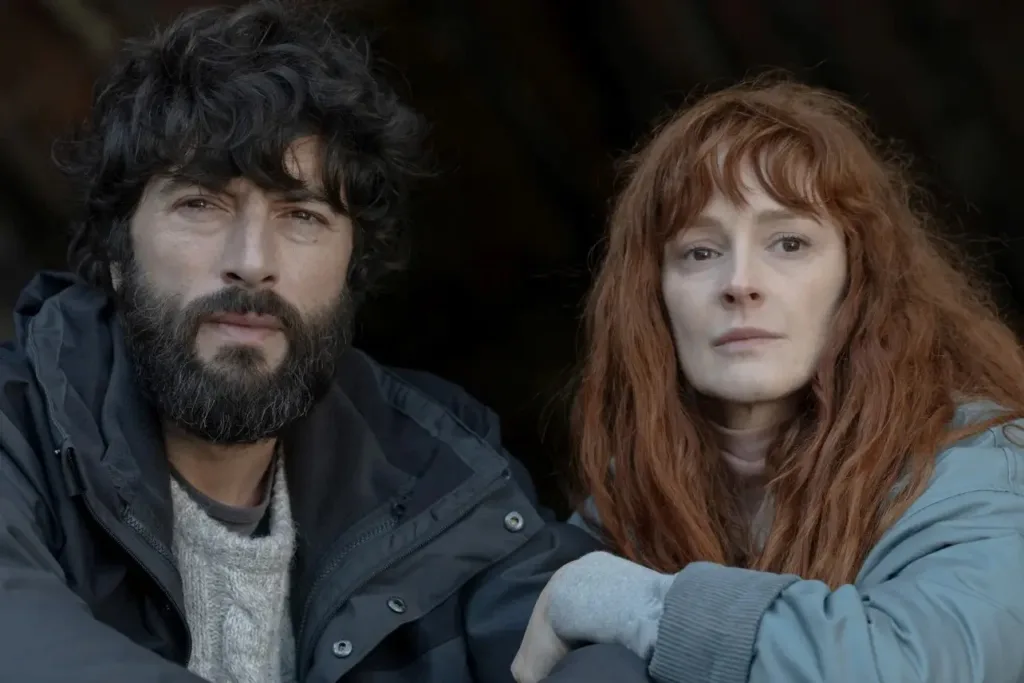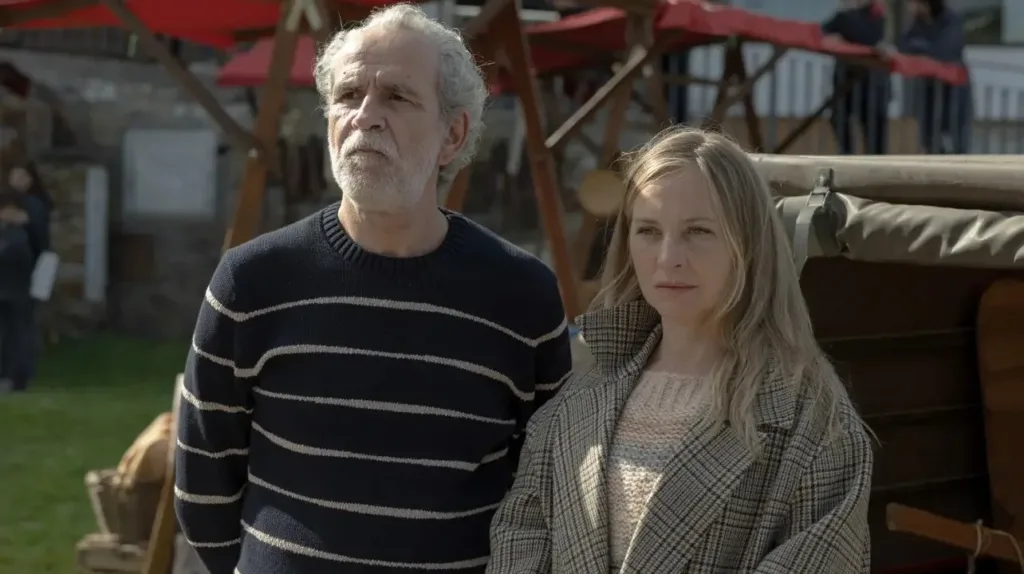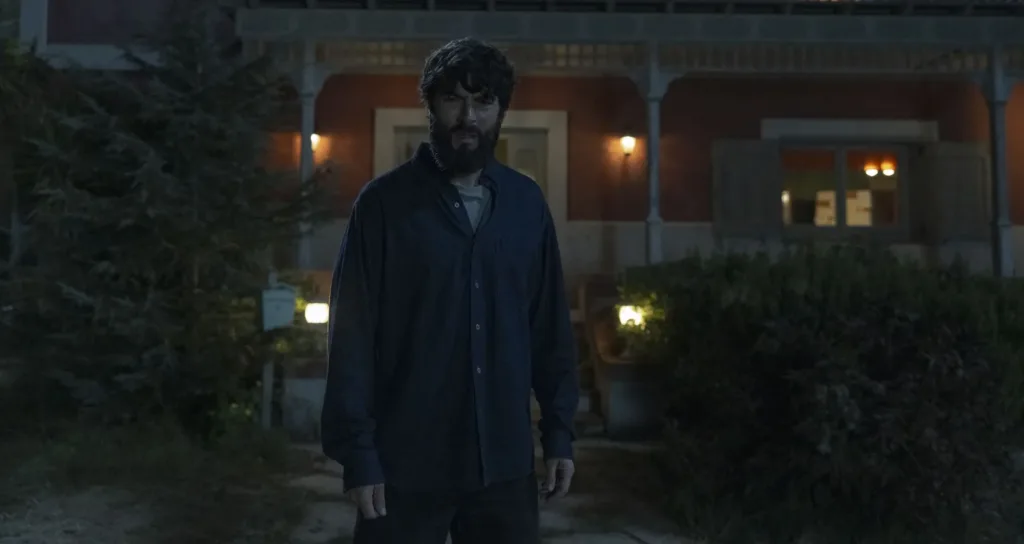Oriol Paulo has made a name for himself producing complex thriller films that keep audiences guessing. His work is known for imaginative plots and ambiguities that stay with viewers long after the final scene. In The Last Night at Tremore Beach, Paulo aims to once again unsettle and intrigue through an unorthodox tale of premonitions and past trauma.
We meet the protagonist Alex, a renowned composer, as he’s endured a personally disturbing incident and retreated to the seaside town of Tremore. Here on the isolated coast, Alex hopes to find peace in his work. But strange things begin occurring in Tremore, exacerbated when a freak lightning strike hits Alex one night. He suddenly experiences unnervingly realistic visions that may foretell events.
With this set-up, the series grabs our attention through its atmospheric setting and Alex’s mystifying new “gift.” We’re left wondering if his visions are psychologically-driven or something more, as similar abilities affected his mother. Paulo establishes a mood of unease and leaves us wanting to follow Alex’s journey. However, the plot soon loses focus as it meanders through convoluted twists and murky storylines. Where an tight narrative and purposeful direction could have sustained tension, the series grows tiring in its aimless ambitions.
While Paulo shows his skill for unsettling premises, on Tremore Beach he sacrifices the very intrigue he works to build. The concepts introduce compel us to watch, even if the execution ultimately disappoints. With this piece, it seems the writer-director reached beyond his grasp, losing the thread of a story with real potential to unsettle and immerse viewers.
Unraveling the Characters
As the show’s protagonist, Alex experiences great depth. A renowned composer, past trauma haunts him. Years ago an incident left him troubled, compounding issues from his so-called “gift” – visions of future events. This ability, passed from his mother, brings stress but also isolation as few understand. Seeking refuge in Tremore, he aims to lose himself in work. Yet wounds remain visible, like his hidden scar, and the lightning’s effects pull him towards confronting private demons. Javier Rey expresses Alex’s instability with nuance, his distress palpable as past and present events collide.
Judy provides solace though she carries burdens too. Meeting at the hostel, their bond grows yet remains undefined. But her history emerges, a wreck shaping her present. In a performance that exposes darkness’ impact, Ana Polvorosa brings rawness and vulnerabilities to Judy’s recounted harm. While togetherness heals, scars linger as hidden pains resurface. Hers is a resilience reflecting life’s endurance despite sufferings that scar both body and soul.
As Alex’s neighbors, gentle Leo and fiery Maria offer community in Tremore’s isolation. Willy Toledo and Pilar Castro imbue their roles with charm and small acts of kindness. Yet shadows loom where Alex’s visions center. Are they more than neighbors, entangled in Alex’s psyche? Their humanity shines through benign details, leaving viewers longing to safeguard simple joys, hoping Alex’s visions prove false as coastal breezes dissipate stormy nights’ phantasms.
Visuals and Pacing
Location is pivotal to The Last Night at Tremore Beach. The coastal village of Tremore itself seems another character, isolated beauty a respite for troubled souls. Wide angles embrace expansive seascape and cliffsides, draining tension from lonely paths. Here one can forget life’s noise, finding solace amid natural drama of crashing waves.
Yet for all its scenic splendor, technical realm fails to match. Scenes linger lengthy, denied shot variability. Minimal establishing closes distance between settings, impairing transitions. Where rapid cuts can intensify suspense, here languid sameness dulls. Repeating medium close-ups and long shots shun imaginative angles offering fresh perspective.
More distressing, no visual storytelling emerges. Flawless cinematography elsewhere absent. Editing neglects emphasizing impactful moments. Early intrigue goes unfulfilled, lacking payoff warranted. Opportunity to enrich subtext through imagery unused, plot relayed flatly as dialogue. Beauty of Tremore worthwhile, though creative vision could have amplified its atmospheres and emotional resonance.
Sadly pacing drags, devoid of rhythm compelling curiosity. What engages at onset loses steam via formulaic, protracted scenes. Skill exists to craft delicately unsettling tone. But instead tension slackens as minimal edits cede momentum. Viewers risk disengaging where visceral craft may have immersed within Tremore’s haunting shores. Captivating premises fizzle without visual panache guiding perception.
unraveling Tremore’s Twisted Tales
Paulo wastes little time entrancing with Alex’s psychic gift and chilling lightning strike. Uncertainty looms as the composer finds himself plagued by disturbing premonitions that worsen each night. Have Alex’s powers emerged, or do they stem from deeper turmoil? This gripping lead draws us in, hungry for answers as Tremore’s secrets deepen.
Yet where intrigue first captivated, confusion arises. Linear plot points fray as side stories diverge aimlessly. Loose ends never tie, questions left dangling without satisfaction. Strange visions mean something, nothing, both? An absorbing premise dissolves upon poorly explaining its own logic. Critical missing details leave resolution hollow, themes muddled without focus. Ambiguity intrigues, but not at the expense of a cohesive narrative.
Subplots involving Alex’s family, Judy’s backstory surface yet collapse without consequence. Introducing intriguing concepts, Paulo abandons all. Meaningful development never emerges, characters reduced to devices devoid of depth. What spoke to the heart now ignores humanity’s complexity for convoluted mystique. Where rich characters and poignant insights could emerge, indifference takes hold, dissipating intrigue into predictable melodrama.
Where tension and mystery called for swift momentum, episodic pacing drags. Provocative openings languish episodes later without payoff. Goodwill wears from repetitive tropes and languid cinematography. Viewers watchful patience wanes facing drawn scenes providing little. A story full of promise loses its way, prioritizing style yet lacking substance to stay engaging. Ultimately, Tremore’s shores only whisper empty stories to the waves.
Breathing Life into Tremore’s Troubled Souls
From the first, Javier Rey immerses us in Alex’s psyche, nuanced features conveying an unravelling composer. Subtle gestures expose deterioration as visions intensify. Yet later, his frenzied weeping and panicking border melodrama. Still, Rey grasps the role’s heart, unflinchingly laying bare a man haunted. His fervour holds our focus, even as scenes test limits.
In less showy roles, Ana Polvorosa and Willy Toledo shine. Polvorosa’s understated vulnerability pulls us into Judy’s nightmare, the strength within her softness inspiring. Toledo brings levity as gentle Leo, passionately supporting wife Maria. Their compassion, borne of own suffering, reminds humanity survives even Tremore’s gloom.
Yet the show-stealer arrives late – Nora Navas. Subtly sinister as Elvira, nostalgia and menace lace her gaze. Her shadow looms over Alex like Tremore’s cliffs. In minimal scenes she leaves an indelible mark, giving life’s profound complexity. While other stories fizzle, Navas’ ferocity fosters reasons to keep watching waves crash upon Tremore’s shores.
Unfulfilled Potential
By broaching mental health and trauma, Paulo highlighted issues demanding care. Yet opportunity went begging as themes fell dull against ambiguity. Alex’s gift warranted compassion, exploring one man’s journey above stigmas. But reduced to device, its impacts shallowlyrendered without empathy.
Overlong, gratuitous sequences inflicted harm unpredictably. Solely shock value, trauma became exploitative rather than aid understanding. Issues impacting society merited respect. But unforewarned, sensitive content carelessly implemented risked hurting the very lives such topics aim to uplift.
Where insights could emerge, only repetition bored. Complex tragedies boil richer talks when handled delicately. But constant diversions sidestepped humanity’s depth, conversations left wanting. Greater care exploring themes’ nuance might have redeemed wandering narrative. Alas, ambition outpaced execution, leaving unfulfilled potentials drifting like Tremore’s receding tides.
Tremore’s Undone Potential
This series stirred intrigue from the outset, enveloping us in Tremore’s moody ambiance and Alex’s beguiling visions. But intricacy decayed into frustration as promising aspects went underdeveloped. Where mystery and emotion could have thrived, the narrative lost direction in protracted ambiguous storylines.
Compelling foundations existed for thoughtful drama surrounding mental health, trauma and human resilience. Yet complexity gave way to simplistic devices and stagnant scenes. Ambitions outpaced coherent execution, squandering well-crafted components.
Performances alone make portions engaging, talented casts’ efforts wasted on an incohesive script. But even committed actors reach limits against sluggish directionlessness. Any novelty dissipates when suspense transforms into tedium.
Had pacing matched the intriguing opening and themes been handled sensitively, this could have been a satisfying exploration of the human condition. As it stands, only the most determined will invest dozens of hours against diminishing returns. Casual viewers risk disengaging early from bungled potentials. However, with patience, some may find Tremore’s shoreline scenery consoling between episodes.
In the end, it’s disappointing when skill and settings conducive to enrichment fail to coalesce into an emotionally resonant whole. This story demonstrated glimpses of brilliance, yet collapsed under its own ambitious but unfocused storytelling. One hopes Paulo’s next works can better realize their vision.
The Review
The Last Night at Tremore Beach
The Last Night at Tremore Beach shows glimpses of promise but ultimately fails to deliver a compelling narrative. Intriguing foundations of character and place are laid, yet the series loses its way in convoluted storytelling and languid pacing that squander engaged viewers. While artistic visions should avoid easy judgments, this outing underscores how even talented creatives can misjudge fundamental story structure to the work's detriment.
PROS
- Moody atmosphere and scenic location creates an engrossing setting
- Intriguing premise addresses interesting themes of mental health, trauma, and premonitions
- Talented cast brings nuanced performances to their roles
CONS
- Story loses coherence early on with convoluted plotlines and little payoff
- Pacing drags badly with repetitive, drawn out scenes that hurt momentum
- Fails to provoke emotional connection or resolve overarching questions





















































